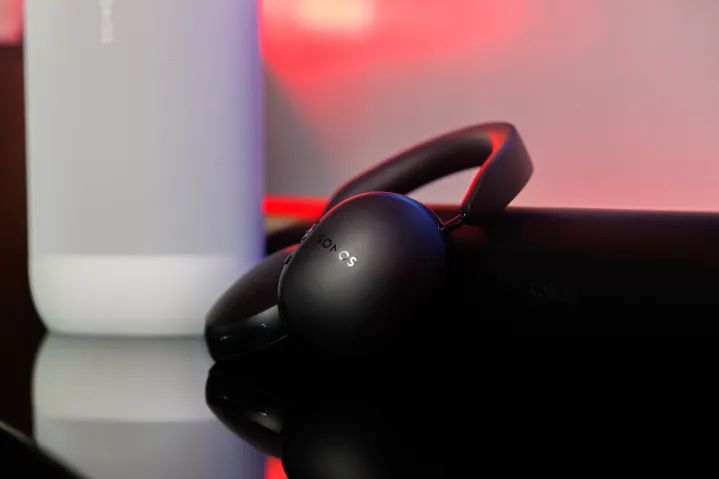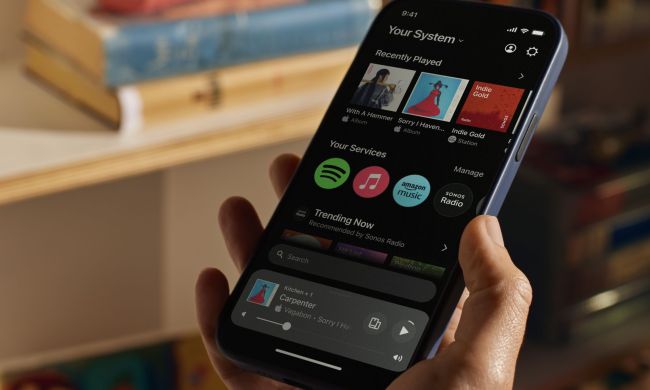Sonos today issued a press release that details the company’s ongoing steps following a catastrophic overhaul of its wireless music platform in May. The company is making seven commitments to customers as it continues to recover at both the application level and the platform level.
The spring update was to be a big one, coming just ahead of the expected launch of the Sonos Ace headphones, the company’s first entry into that multibillion-dollar market. But it didn’t take long for customers to realize that something had gone very wrong. Bread-and-butter Sonos features were missing. Connectivity problems abounded, and for some they still persist today. It was a pretty major failure of a platform that for years allowed users to wirelessly play music from nearly any source in any room of their home — even outside. It had done so seamlessly, and not inexpensively. A Sonos system could be a very expensive investment.
Now, more than four months after the debacle began, Sonos is detailing its way forward.
“Our priority since its release has been — and continues to be — fixing the app,” Sonos CEO Patrick Spence said in the press release. “There were missteps, and we first went deep to understand how we got here, and then moved to convert those learnings into action. We are committed to making changes to get us back to being the brand people love by offering the best audio system for the home and beyond. We must always do right by our customers, and I am confident that, with these commitments, we will.”
In addition to the press release, I spoke with Sonos chief strategy officer and chief legal officer Eddie Lazarus (he previously was Sonos’ chief financial officer) for a half-hour about what happened, and how the company is moving forward. He echoed Spence’s points, as you’d expect. But I did get the sense that the company was blindsided by the scale of the problems.
“I really think it was that we just got taken by surprise,” Lazarus said in our interview. “If we had known that we were going to have these stability and performance issues, we never would have launched this app. But we didn’t, and now we’re just heads down to fix it.”

Sonos’ commitments to customers
Sonos has been extremely transparent about the process of fixing things at the app and platform level, updating customers on its website and in Reddit threads. Here are the seven commitments Sonos says either are already underway, or are being implemented before the end of the year. These are in Sonos’ own words:
Unwavering focus on the customer experience. To ensure that we deliver the highest level of customer experience, we will always establish ambitious quality benchmarks at the outset of product development and will not launch products before meeting these criteria. We will also enhance the tools necessary to measure the quality of the experience actually being delivered to customers to ensure that we maintain the standards our customers expect.
Increase the stringency of our pre-launch testing phases. Our beta testing program will include more types of customers and more diverse setups for a longer testing period. This will allow us to find, diagnose and solve customer concerns more quickly before going to market.
Demonstrate humility when introducing changes. In contrast to the all-at-once automated app release we issued in May, any major change to the Sonos app will be released gradually, allowing
customers to adjust and provide feedback before it becomes the default. For new features smaller in scope, we will introduce an opt-in experimental features option in the app for customers who would like to participate in testing them.
Appoint a Quality Ombudsperson. This new role will ensure our employees have a clear path to escalate any concerns in terms of quality and customer experience. This person will be consulted by executive leadership throughout the development process and before any product launches. In this role, the ombudsperson will guarantee transparency and publish a report to management and employees twice per year, and will present regularly to the Sonos board of directors.
In addition, we are also committing to the following to begin to regain the trust of our customers:
Extend our home speaker warranties. To reflect our strong belief in the quality of our products, we will extend the manufacturer’s warranty by one year for all home theater and plug-in speaker products currently under warranty.
Relentlessly improve the app experience with regular software upgrades. We will roll out updated mobile software versions every 2-4 weeks to optimize and enhance the software experience, even once this issue is resolved.
Establish a Customer Advisory Board. To ensure we never lose sight of the voice of the customer, this board will provide feedback and insights from a customer perspective to help shape and improve our software and products before they are launched.
What’s next …
Press releases and executive mea culpas only go so far. That doesn’t mean you don’t do those things, and I got the sense in talking with Lazarus that the company truly understands that. It has to fix the app — and make it better than it was before. It has to solve the problems at the platform level. And because Sonos is a complicated ecosystem, one side of that equation greatly affected the other. Sonos’ new features were going to be missing from the app and appeared to be ready to weather that storm. What it didn’t expect was the larger problems at the system level — connectivity and sluggishness, if the system worked at all.
“This is about making sure that our customers know we’re never going to go through this experience with them again,” Lazarus told me. “Because we’ve looked deeply at what caused it. We are setting out some very specific measures where we’re taking to make sure it doesn’t happen again.”




